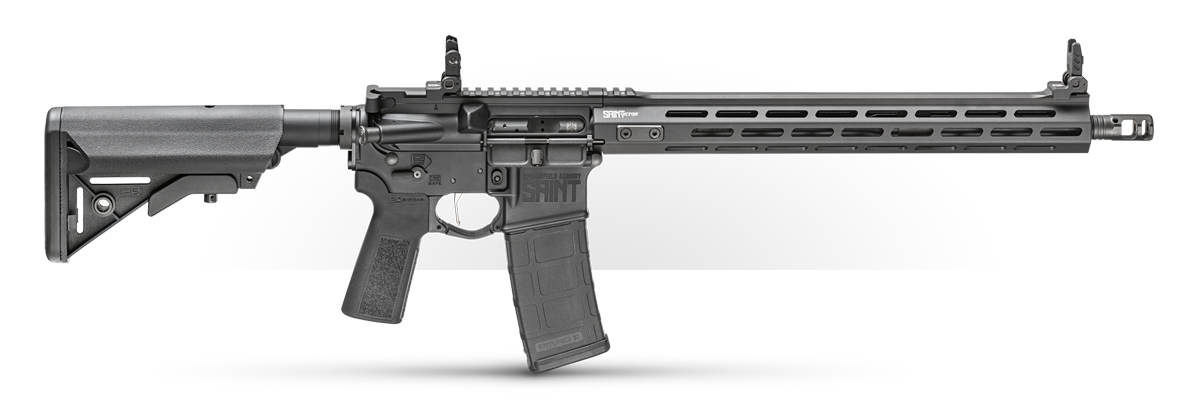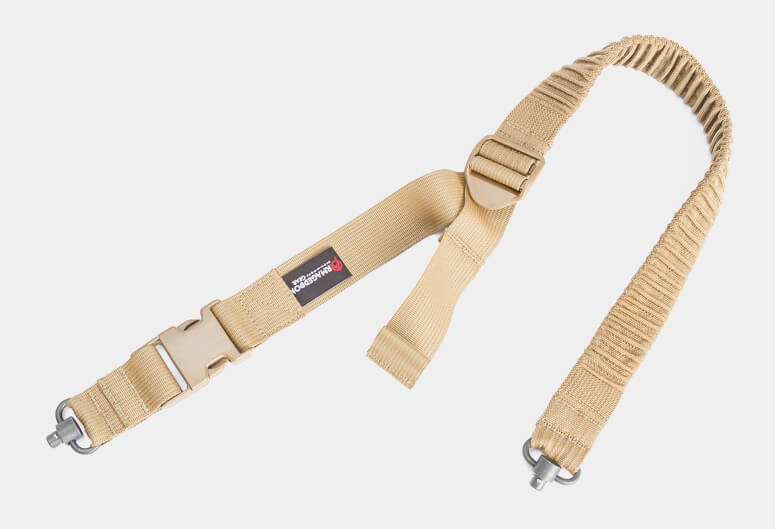A sling choice is a very important option everyone should consider when they get a rifle. Like everything else in this world full of new products, start-up companies and a million voices telling you what you should and shouldn’t buy, it can be difficult to know what to get. We wanted to try to narrow it down for you by making some short videos and articles about the big options you have when it comes to sling choices.
Our personal favorite sling type or category is the two-point sling. This is the sling that 95% of the time we here at GunSpot would choose, and this is for a few reasons. Luckily, a lot of people feel the same. So, they are widely available in just about every connecting method, color, and length you’d need.
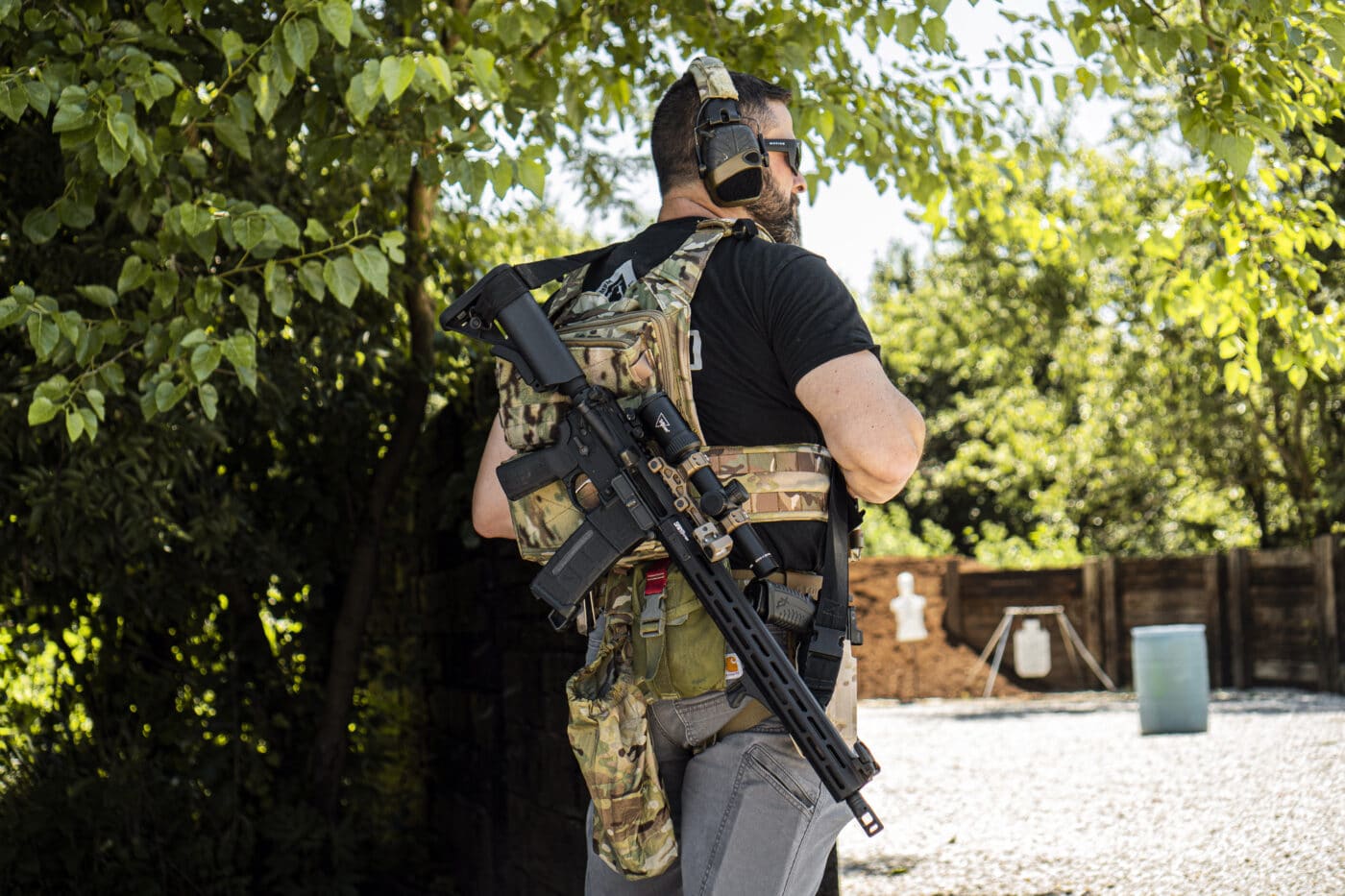
Here are some of the reasons we encourage nearly everyone to use a two-point sling. But with those “pros”, we also give you some “cons” as well. Know that we recommend you get a quick adjustable two-point sling with elastic. A sling like that is versatile, fast and comfortable. But also, be sure to check out our article about the pros and cons of the one-point sling as well, as that one might fit your needs.
Positive Aspects of a Two-Point Sling
Let’s lead with the pros of running a two-point sling on your rifle. While there are others, I see three main positive attributes to this sling type:
- Security and efficiency
- Increased shooting stability
- Versatility
Security and Efficiency
With an adjustable two-point sling, preferably a quick adjusting one like our 1.5” Heavy Carbine Sling, you gain our first two-point sling benefit we see. This is being able to tighten your sling and secure the rifle to your body. With a rapidly adjustable sling, you can cinch your rifle down to your chest so, if you need to be hands-free while having a secure rifle, you can.
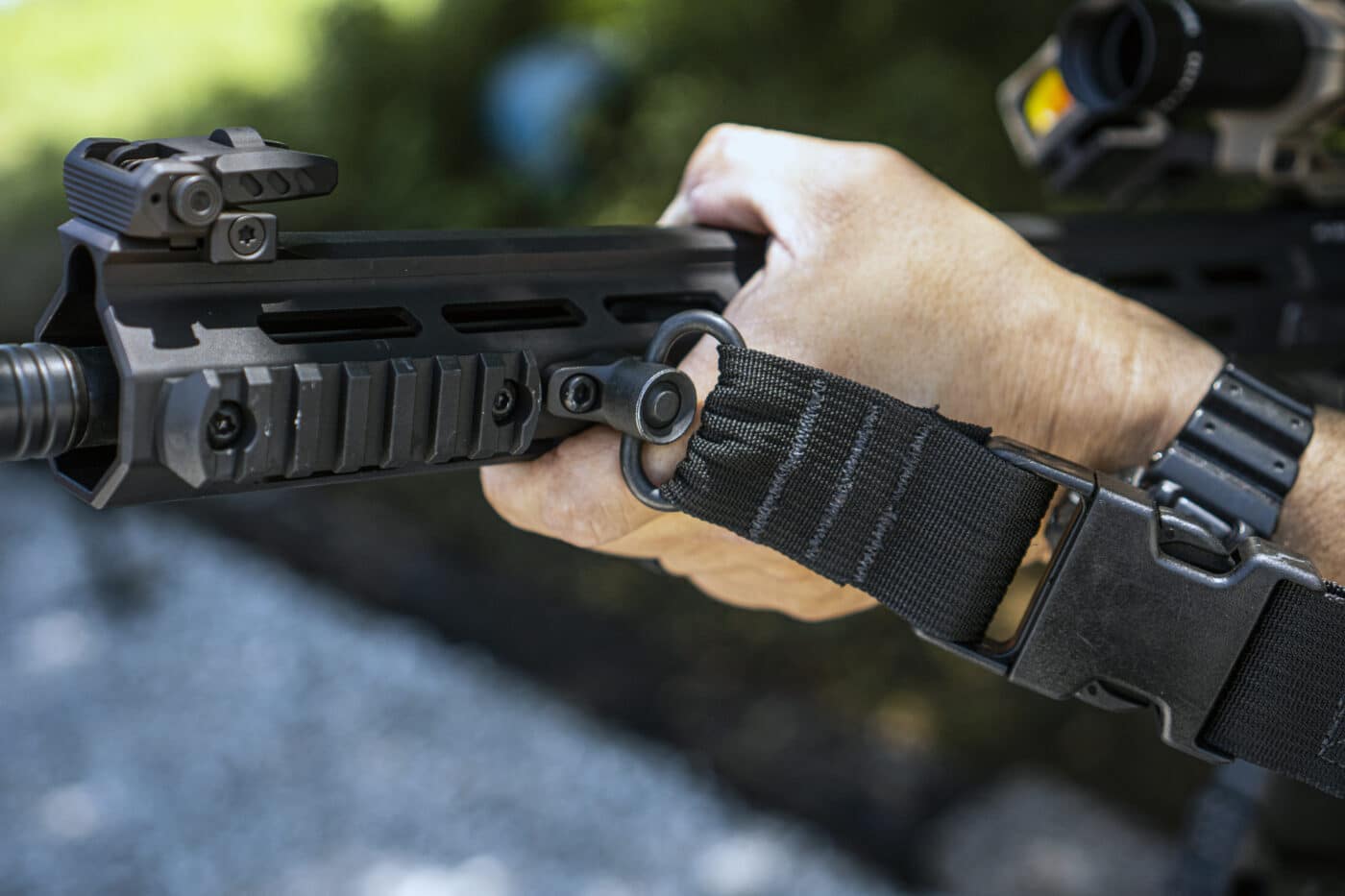
If you needed to cinch up that rifle, go hands-free and run like hell without the gun dangling down around your knees, you most certainly can. Also, if you have a job where you might have to detain a subject, like if you are a police officer, private security, etc. You can cinch the gun down and use both hands to arrest the subject. At the same time, you can keep the rifle tight against you and out of reach from the subject. It’s not a good idea to have your rifle dangling loosely in front of you while trying to make an arrest.
In the same way, it can be beneficial to be hands-free if you have to care for someone, such as administering first aid. Having the rifle tight and up out of the way will be less threatening to the person you are caring for.
Stable Shooting Tool
The second biggest advantage you gain with a two-point sling is being able to use it as a tool for shooting from a more stable position. A two-point sling, if it’s just tight enough, can help suck the rifle into the pocket of your shoulder. Then you can use your support arm to increase tension in the sling, creating less wobble while looking down the sights.
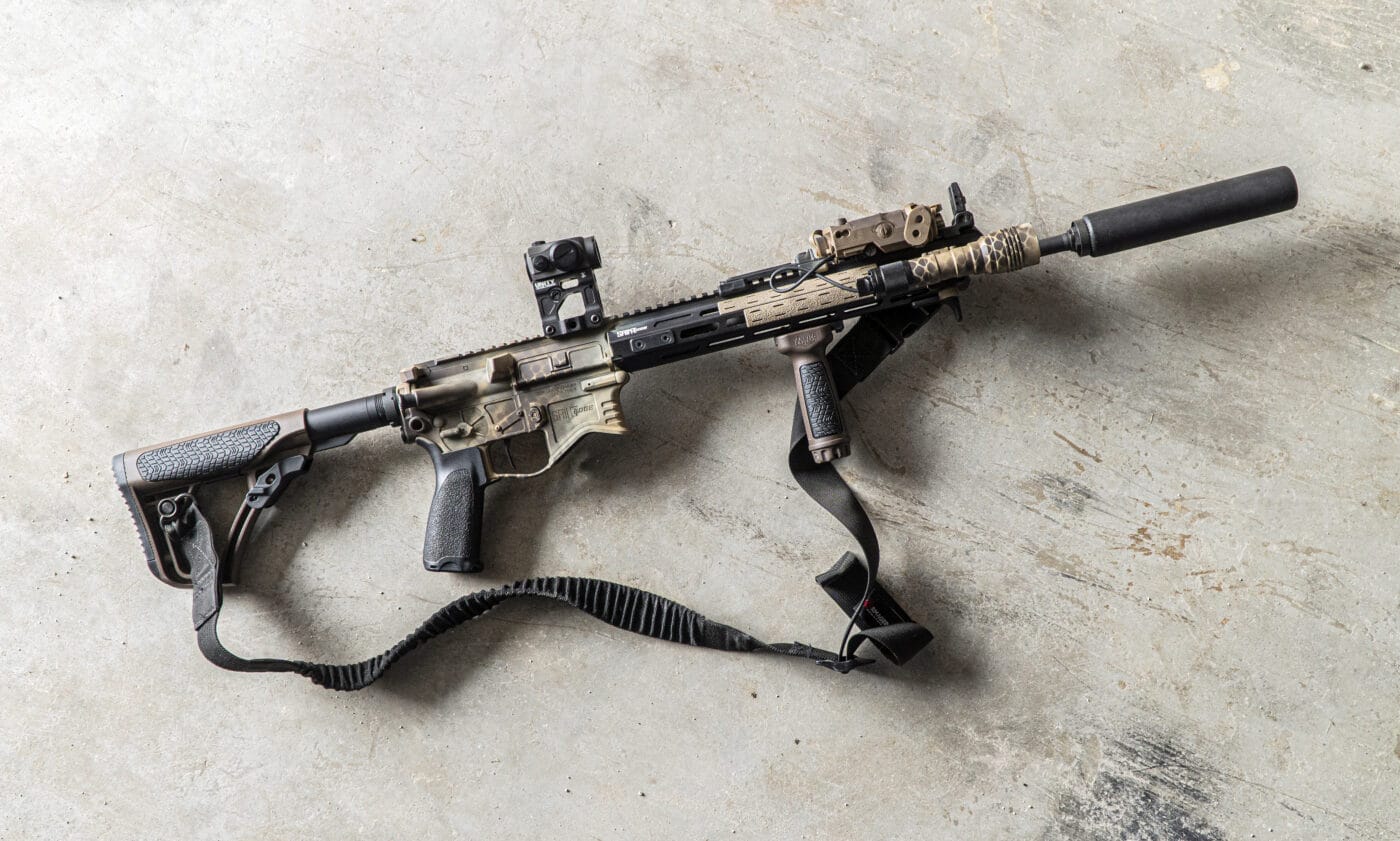
If your sling is tight enough that you can do a ready-up, but one step tighter and it’d be too tight, then you are in the right setting. This also keeps your rifle stock hovering right around your shoulder. This will make it much, much harder to miss the shoulder pocket as you present onto the target.
Sling It Like You Need It
The next big pro of a two-point sling is the versatility of it. A two-point sling can be slung in just about any way. The two-point can help you sling your rifle in just about any way you’d want. You can carry it in a tactical way on your chest, you can reverse swim out of it with your dominant arm and wear it strapped muzzle down on your back.
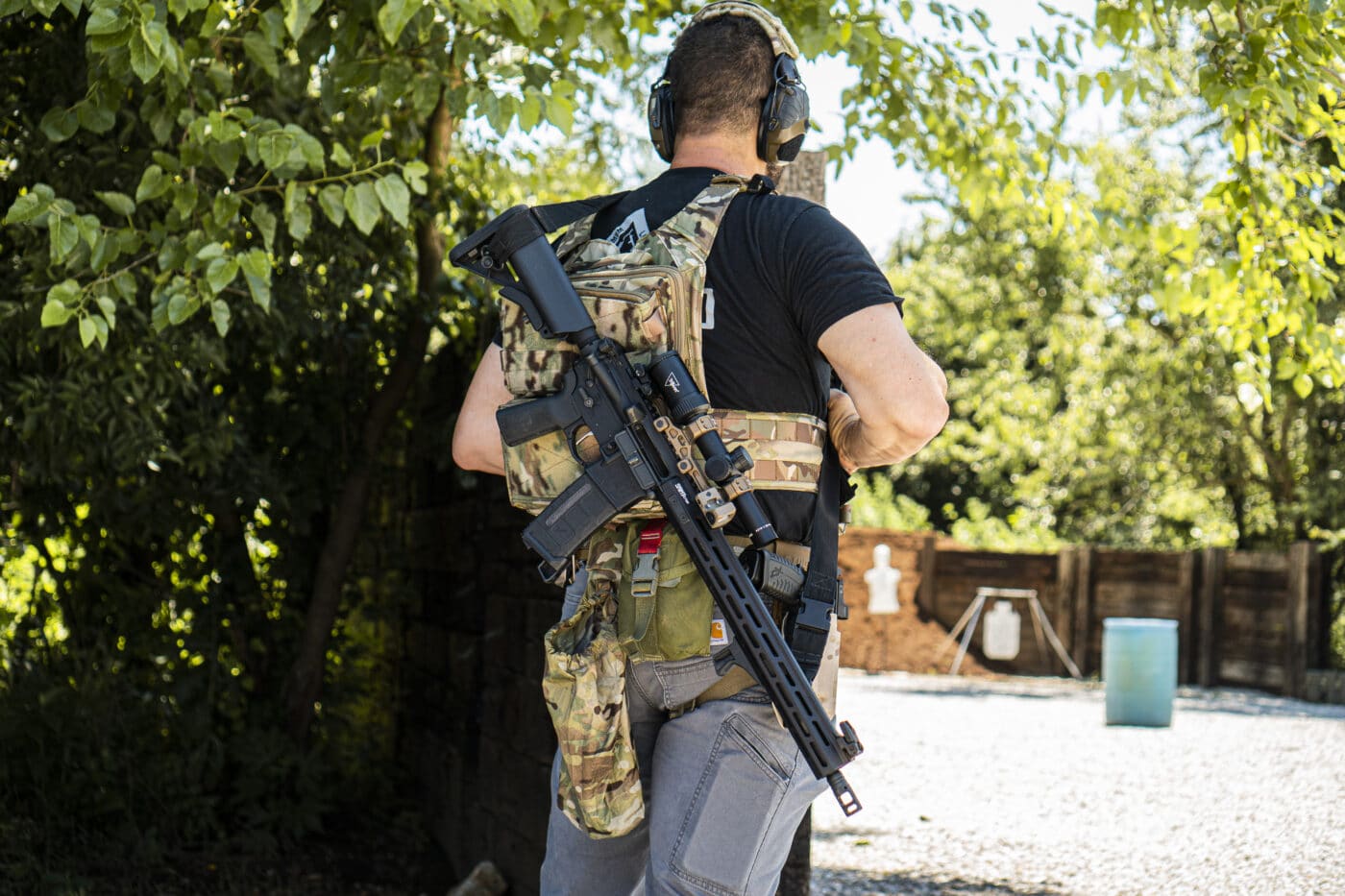
Or, you can sling just over one shoulder like a hunter on a walk to your deer stand. Again, if you have the ability to get it snug you can tighten it down in all these positions too for security. You can’t do this with a single-point or three-point sling.
The Drawbacks
Now, nothing is perfect, right? For every pro, there is normally a con. That is true for the two-point sling as well. Here are some of the potentially negative aspects of the 2-point sling:
- Poor designs from some manufacturers
- Inefficient shoulder swaps
- Can catch on gear
Not Every Two-Point Is the Same
The two-point sling’s biggest con is something that can be avoided. The biggest con is that not all of them are equal.
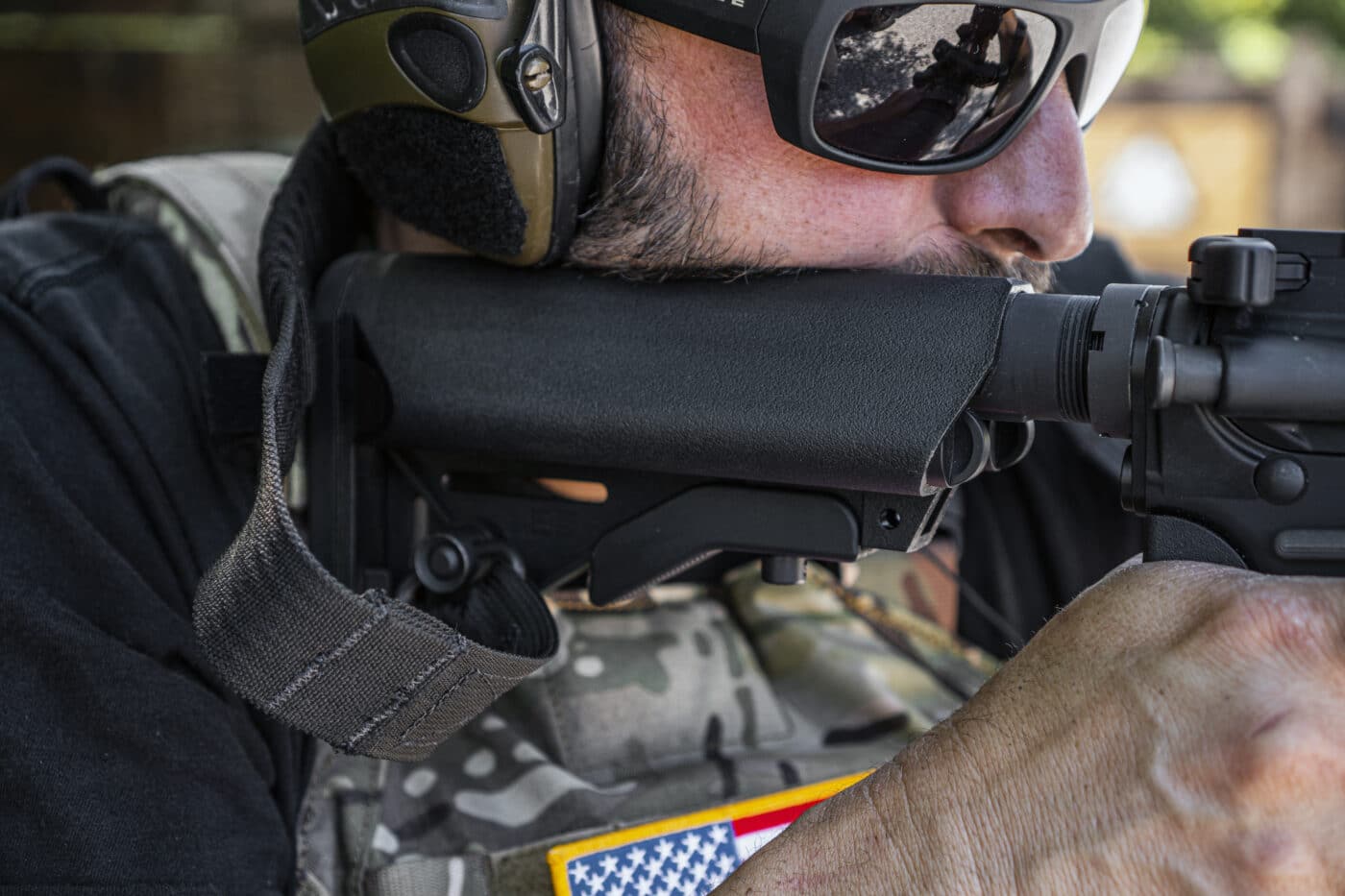
To get the most from a two-point sling you need one that is quickly adjustable, like ours. There are some old-school slings that are the kind you can’t adjust and then it just kinda locks that length in and that’s it. Some of the old M16 service weapons slings are a good example of that. If it’s non-adjustable then all you get is just a big loop. That gets in the way.
Swapping Shoulders Isn’t as Easy
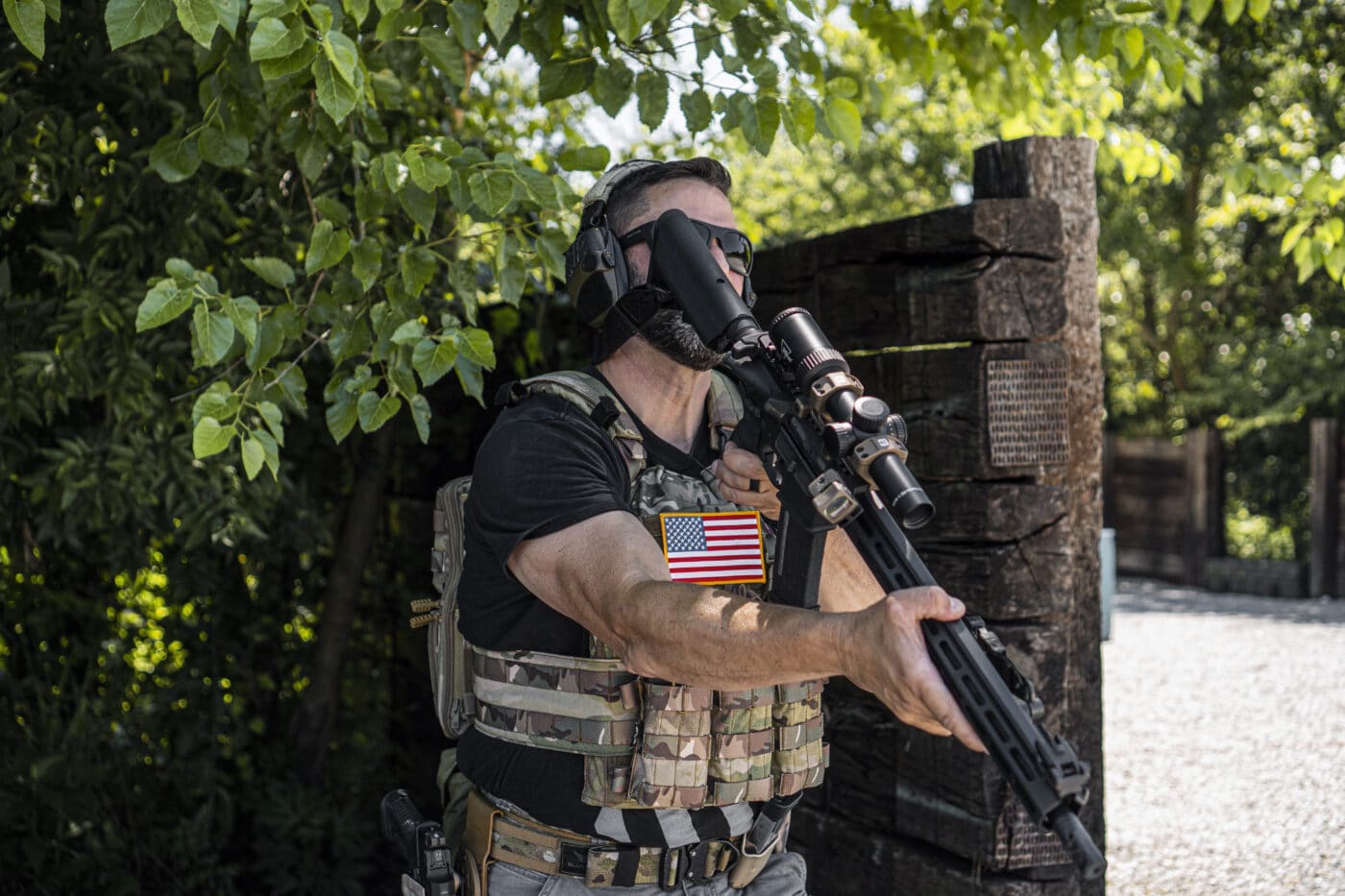
The other hit that the two-point sling takes is when you try to swap shoulders. Swapping shoulders and shooting with a two-point sling is nearly impossible unless you swim out of the sling by dropping your support arm out of the loop. Otherwise, you might choke yourself out as you switch shoulders. Although, if your two-point sling is really loose, it can be easier to switch shoulders.
More Prone to Snagging
The two-point sling itself wraps around your body, and for reloading, pistol transitions and shoulder transitions the surface area of the sling shifting and sliding around your gear is more than three-point or one-point slings. With two-point slings, you have to swim out of the sling to increase your mobility, but this introduces another reason why this type of sling can snag more potentially. The more you are maneuvering it, the more prone you are to snagging.
Conclusion
Like I said, Grant and I both like the two-point sling vs. the three or one-point slings. We feel the pros way outweigh the cons on this one. It also seems like that is true for most people. By doing a few simple scrolls through Instagram you will notice that it seems almost everyone has a two-point sling on their rifle. But, check out the video above, see our piece on the one-point sling, and keep an eye out our upcoming piece on the three-point sling, and make your choice!
Editor’s Note: Please be sure to check out The Armory Life Forum, where you can comment about our daily articles, as well as just talk guns and gear. Click the “Go To Forum Thread” link below to jump in!
Join the Discussion
Featured in this video
Continue Reading
Did you enjoy this video?

 65
65




